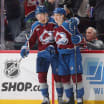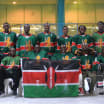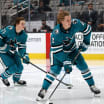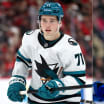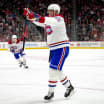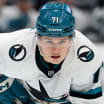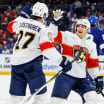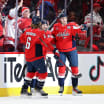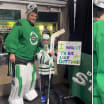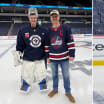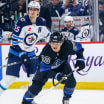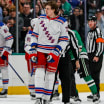Legendary hockey reporter Stan Fischler writes a weekly scrapbook for NHL.com. Fischler, known as "The Hockey Maven," shares his humor and insight with readers each Wednesday.
This week Stan begins a series of Stanley Cup Playoff stories. This chapter is about how the first dynasty in the NHL began with an unexpected Cup win by the Toronto Maple Leafs in 1947.
Maple Leafs dynasty began with unexpected Stanley Cup win in 1947
Won first of three consecutive championships after shrewd moves by Smythe
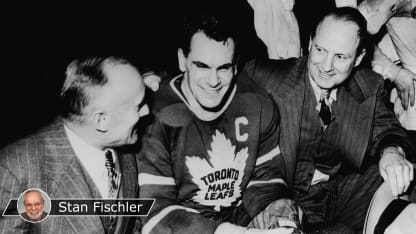
By
Stan Fischler
Special to NHL.com
Conn Smythe had reason to be discouraged.
The Toronto Maple Leafs owner and manager had returned home from his heroic service in France as a Major in the Canadian Army during World War ll, painfully suffering from war wounds.
If that wasn't enough, Smythe and his wartime replacement in Toronto's front office, Frank Selke, bitterly feuded over a trade Selke had failed to clear with Smythe. As a result, Selke, the Maple Leafs assistant manager, resigned and signed on as manager of the Montreal Canadiens in May of 1946.
"It was," moaned Selke, "the unhappiest year of my long association with the game."
Smythe was even more unhappy. His understudy had left him with an uninspiring roster sprinkled with returning servicemen whose abilities were dubious.
"We've got to rebuild immediately," Smythe asserted. "There are too many old men on our team. What we need is youth, fighting youth, kids with spirit. This rebuilding job isn't going to be easy."
Accepting that fact, Smythe went on innumerable scouting expeditions and talked with hockey friends. They responded with several good tips.
"Rabbit McVeigh, who'd played for the old [New York] Americans, mentioned a big, tough left wing with Buffalo (of the American Hockey League) -- Vic Lynn. I liked the kid. Then a Montreal sportscaster pal mentioned that the best defense prospect in the West was a fellow named Garth Boesch and I went after him as well."
One by one, the new players arrived and made positive impressions. Right wing Howie Meeker had survived a wartime grenade blast that nearly cost him a leg. A 19-year-old defenseman from Winnipeg, Jim Thomson, was signed, along with Gus Mortson, a defenseman from Kirkland Lake, Ontario. A hustling Navy man, Joe Klukay, would prove the kind of gritty forward Smythe adored.
"I should have figured it out years ago," Smythe concluded. "Youth is the answer in this game. Only the kids have the drive, the fire and the ambition. Put the kids in with a few old guys who still like to win and the combination is unbeatable."
That remained to be seen. There was no way of knowing whether young pros such as right wing Bill Ezinicki and defenseman Bob Goldham were good enough to play in the NHL. Nor whether returning Army vets --goalie Turk Broda and center Syl Apps -- still were hungry to win the Stanley Cup.
Until proven otherwise, the critics pegged the rebuilt Maple Leafs to finish near the bottom of the League and maybe even last. Smythe didn't care. His motto was, "If you can't beat 'em in the alley, you can't beat 'em on the ice."
"I want a hard, aggressive team," Smythe added, "with no Lady Byngers."
He didn't have to worry about that. What mattered was if the mix of older players and younger ones would mesh.
"Smythe gave us a good blend," Apps said. "New young fellows, old players, good goal scorers and good, strong body checkers. We had wonderful balance."
To the amazement of practically everybody, the new pieces fit into the Toronto machine like perfectly meshed gears.
"Most of us thought his team might be at least a year away," Selke recalled, "but they surprised us all."
Selke's defending Cup champions in Montreal retained first place but the Maple Leafs kept challenging all season. When injuries decimated the Maple Leafs, the replacement proved more than adequate. One was left wing Sid Smith. The other was a defenseman lured from the Hollywood Wolves.
His name was Bill Barilko, out of rugged Northern Ontario, who had the curious habit of running on the tips of his skates. More importantly, he had perfected the art of hip-checking and loved hitting anyone in sight.
In no time at all, he earned the nicknames "Snake Hips" and "Bashin' Bill."
He was exactly the kind of player Toronto needed.
"When Bill was on the ice," left wing Harry Watson said, "the opposition made sure to keep their heads up. You have to be a good hitter to get the nickname 'Bashin' Bill.'"
Once it was apparent that Broda, the 1942 Cup-winning goalie, had regained his post-war stride, Toronto stunned the experts by skating neck and neck for first place with star-studded Montreal.
The Canadiens skill up and down the lineup, led by the inimitable Maurice "Rocket" Richard and his Punch Line mates, center Elmer Lach and left wing Toe Blake. Canadiens goalie Bill Durnan was on his way to winning the Vezina Trophy, awarded to the top goalie in the NHL, for the fourth consecutive season in 1946-47.
"We couldn't match Montreal in talent," said Meeker, who won the Calder Trophy as the League's top rookie in 1947, "but we had 10 really tough hockey players. The tougher it got, the better our guys played."
They played well enough to finish in second place with a 31-19-10 record and 72 points, eight behind League-leading Montreal. The skeptics waited for Toronto's bubble to burst. And, it finally did, if only for one game.
Facing the third-place Detroit Red Wings in the playoff semifinals, Toronto won 3-2 in overtime in the series opener at Maple Leaf Gardens, but lost 6-1 in front of the home fans in Game 2.
"Leafs are finished," snapped a Detroit player before stepping into his team bus.
However, in the next three games Broda allowed three goals as the Maple Leafs reeled off 4-1, 4-1 and 6-1 wins to eliminate the Red Wings and advance to the Cup Final.
That pitted the defending champ -- and heavily favored -- Canadiens against the Maple Leafs.
Durnan whetted journalists' appetites with this classic comment, "How did that club ever get into the playoffs?"
Toronto Globe and Mail columnist Jim Coleman followed up with a humorous poem, chiding Durnan. The flames of controversy burned even brighter after the Canadiens goalie shut out the Maple Leafs 6-0 in the opener.
The Maple Leafs were at their belligerent best and the Canadiens responded in kind in Game 2, a 4-0 Toronto win. Richard attacked Ezinicki and was suspended by NHL President Clarence Campbell for the next game, which Toronto won 4-2 to take a 2-1 series lead.
"We're giving them our best," Smythe said, "and it's possible it may be good enough!"
Game 4 featured the best a classic goalie battle between Broda and Durnan. Apps scored at 16:36 of overtime to give the Maple Leafs a 2-1 win.
The Canadiens rebounded for a last-gasp 3-1 victory in Game Five. But, in the end -- and as Smythe had predicted -- youth was served. A "Kid Line" of Meeker, Vic Lynn and Ted Kennedy was created in training camp by coach Hap Day and remained a mainstay throughout the season and finale.
"If you couldn't play hockey with Kennedy, you couldn't play hockey with anybody," Meeker said. "He was as great a competitor as has ever played the game. He had great hockey sense and great puck-handling and passing skills."
Although Montreal silenced the Maple Leaf Gardens crowd with a goal just 25 seconds into Game 6, Kennedy and Meeker set up Lynn for the tying goal early in the second period. The game remained tied until late in the third when the Kid Line went on the attack. This time Meeker fed Kennedy who beat Durnan with a screened shot with only 5:21 remaining in regulation.
Broda did the rest of the work and the Maple Leafs won the Stanley Cup with the 2-1 victory in Game 6.
"There were three reasons why we won the Cup." Smythe explained. "First there was Hap Day's coaching and the correct decisions he made. Second there was the play of our old champions, our vets -- Broda, Apps, Kennedy -- from our other championship teams. Third, there was the play of kids who wanted to be champions."
Smythe sensed Toronto had a dynasty in the making but was missing one piece. It had two future Hall of Fame centers, Apps and Kennedy, but needed one more.
After doing due diligence, Smythe concluded that the best available center was Max Bentley of the Chicago Black Hawks and the Maple Leafs acquired him in a trade before the 1947-48 season.
The deal got Chicago an entire forward line (Gaye Stewart, Bud Poile, Gus Bodnar) and two starting defensemen, Bob Goldham and Ernie Dickens.,
In return Toronto obtained Bentley and minor leaguer Cy Thomas.
With Bentley, the Maple Leafs won the Stanley Cups in 1948 and 1949 and became the first three-Cup dynasty in the NHL. Just for good measure, the Maple Leafs added another title in 1951, completing their run from underdog to dynasty.

